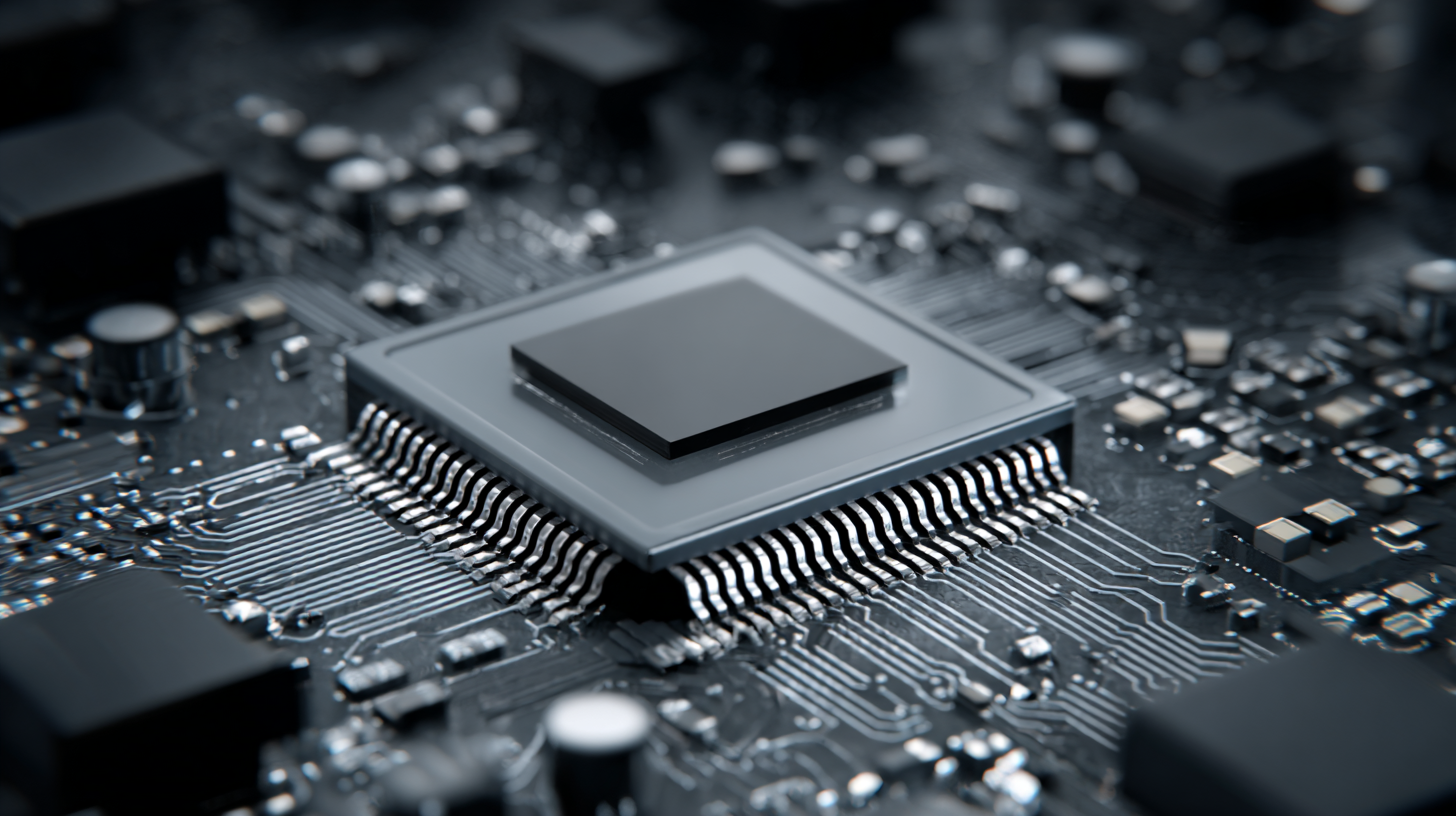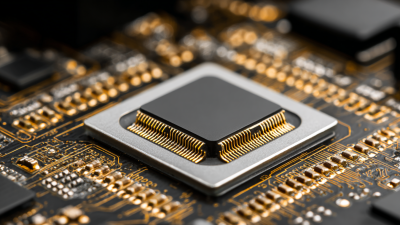Leave Your Message
 The advancement of SiC (Silicon Carbide) semiconductor technology has emerged as a pivotal factor in enhancing energy efficiency across various industries. According to the latest report by MarketsandMarkets, the SiC semiconductor market is projected to grow from $1.21 billion in 2020 to $6.47 billion by 2026, reflecting a CAGR of 32.5%. This growth is largely driven by the increasing demand for energy-efficient devices in sectors such as automotive, renewable energy, and power electronics.
The advancement of SiC (Silicon Carbide) semiconductor technology has emerged as a pivotal factor in enhancing energy efficiency across various industries. According to the latest report by MarketsandMarkets, the SiC semiconductor market is projected to grow from $1.21 billion in 2020 to $6.47 billion by 2026, reflecting a CAGR of 32.5%. This growth is largely driven by the increasing demand for energy-efficient devices in sectors such as automotive, renewable energy, and power electronics.
SiC semiconductors, known for their ability to operate at high voltages, temperatures, and frequencies, enable more efficient power conversion and management. As industries seek to reduce carbon footprints and improve sustainability, harnessing the power of SiC semiconductors is becoming essential for achieving operational efficiencies and meeting regulatory requirements. In this guide, we will explore effective strategies to leverage SiC semiconductors for enhanced energy efficiency, detailing key applications and best practices to ensure optimal implementation.
Silicon carbide (SiC) semiconductor technology has emerged as a game-changer in the field of energy efficiency. By leveraging its unique physical properties, SiC devices operate at higher voltages, temperatures, and frequencies compared to traditional silicon-based semiconductors. According to a recent report by MarketsandMarkets, the SiC semiconductor market is projected to grow from USD 3.5 billion in 2021 to USD 8.4 billion by 2026, driven largely by the increasing demand for energy-efficient solutions across various sectors.
The ability of SiC technology to reduce energy losses significantly enhances overall system efficiency. For instance, SiC-based power electronics can achieve up to 97% efficiency in electric vehicle applications, compared to around 90% for silicon counterparts. This improvement is particularly vital as industries scramble to meet ambitious carbon reduction targets. Additionally, SiC's high thermal conductivity allows for superior thermal management, reducing the need for bulky heat sinks and improving reliability in high-temperature applications, such as renewable energy systems and industrial automation.
Understanding these fundamentals of SiC technology is crucial for manufacturers and engineers looking to innovate in energy-efficient designs. As industries increasingly transition towards sustainable practices, harnessing the power of SiC semiconductors will play an essential role in driving this transformation, offering both ecological benefits and competitive advantages.
 Silicon carbide (SiC) semiconductors are revolutionizing energy efficiency across various sectors due to their remarkable advantages over traditional silicon-based technologies. One of the primary benefits of SiC is its higher thermal conductivity, which enables more efficient heat dissipation. This characteristic allows devices to operate at higher temperatures without compromising performance, significantly reducing the need for complex cooling systems. Consequently, energy expenditure in cooling is minimized, leading to an overall increase in system efficiency.
Silicon carbide (SiC) semiconductors are revolutionizing energy efficiency across various sectors due to their remarkable advantages over traditional silicon-based technologies. One of the primary benefits of SiC is its higher thermal conductivity, which enables more efficient heat dissipation. This characteristic allows devices to operate at higher temperatures without compromising performance, significantly reducing the need for complex cooling systems. Consequently, energy expenditure in cooling is minimized, leading to an overall increase in system efficiency.
Another key advantage of SiC semiconductors is their ability to handle higher voltage and current levels. This capability results in reduced energy losses during power conversion processes, making SiC an ideal choice for applications such as electric vehicles (EVs) and renewable energy systems. By utilizing SiC technology, manufacturers can produce more compact and lightweight power systems, further enhancing energy efficiency. As industries increasingly turn to sustainable solutions, the adoption of SiC semiconductors will play a crucial role in meeting energy-saving goals while simultaneously improving overall performance.
Integrating Silicon Carbide (SiC) semiconductors into existing systems offers a path to significantly enhance energy efficiency across various applications. One effective strategy is to assess the current power conversion process. By replacing traditional silicon components with SiC transistors, systems can operate at higher voltages, frequencies, and temperatures while achieving lower switching losses. This transition not only reduces energy consumption but also improves overall system reliability.
Another key implementation strategy involves retrofitting existing power electronics configurations. For instance, in electric vehicles or renewable energy systems, incorporating SiC devices enables faster charging and increased range through better thermal management and efficiency. Utilizing SiC in power inverters and converters allows for more compact designs that can deliver higher power density. System designers should also focus on optimizing thermal management solutions to handle the unique operating characteristics of SiC, ensuring long-term sustainability and performance improvements.
Silicon carbide (SiC) semiconductors are revolutionizing the energy efficiency landscape across various industries. As performance improvements become paramount, evaluating the potential benefits of SiC technology reveals significant enhancements in efficiency and reliability, particularly in high-voltage and thermal applications. The robust properties of SiC enable devices to operate at higher temperatures and voltages, which translates into reduced energy losses and improved overall system performance.

Tips for maximizing the benefits of SiC semiconductors include prioritizing thermal management strategies in your designs. Effective heat dissipation techniques not only enhance the longevity and performance of SiC devices but also ensure stable operation under demanding conditions. Additionally, integrating advanced simulation tools during the development phase can help identify optimal configurations, further driving efficiency improvements.
Furthermore, as the silicon carbide wafer market continues to evolve, stakeholders must navigate the complexities of supply and demand effectively. Implementing a diversified sourcing strategy can mitigate risks associated with supply chain fluctuations. By staying informed about manufacturing process advancements and adopting data-driven methodologies, organizations can position themselves to leverage the full potential of SiC semiconductors in enhancing energy efficiency.
The evolution of silicon carbide (SiC) semiconductors is poised to significantly impact future energy solutions, particularly in response to the growing demand for enhanced energy efficiency. As global emphasis shifts towards reducing carbon emissions, the performance advantages of SiC in power electronics are becoming increasingly recognized. With a remarkable ability to withstand high voltages, operate at elevated temperatures, and deliver faster switching capabilities, SiC devices are ideally suited for applications in electric vehicles and renewable energy systems. This trend aligns with the rising importance of power semiconductors, which are pivotal in improving electricity transmission efficiency amidst an escalating energy crisis.
Simultaneously, the market dynamics for SiC and gallium nitride (GaN) are experiencing rapid growth, with projections indicating a staggering compound annual growth rate (CAGR) of 27.1% through 2034. This surge is driven by the increasing adoption of electric vehicles and advanced charging infrastructure, where SiC's superior efficiency can enhance overall system performance. As industries continue to embrace these wide-bandgap semiconductors, the potential for innovation in energy solutions expands, promising a transformative impact on energy consumption patterns across various sectors. The synergy between technological advancements and sustainability initiatives will likely define the trajectory of SiC semiconductor development in the coming years.






